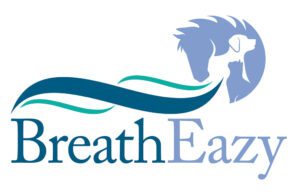Respiratory disease is a common reason for canine consultations in veterinary practice. From chronic bronchitis and tracheal collapse to brachycephalic obstructive airway syndrome (BOAS), respiratory conditions in dogs can significantly impact quality of life – and frequently require long-term, tailored care. Prevalence varies with age: upper respiratory diseases typically present around four years of age, while lower respiratory disease – such as canine chronic bronchitis – has a median age of onset closer to ten years.
In this blog, we’ll explore some of the most common respiratory diseases seen in general practice and how inhaled treatments can transform management and clinical outcomes for affected dogs.
Common respiratory diseases in dogs
Canine chronic bronchitis
Canine chronic bronchitis is a common cause of persistent cough in middle-aged to older dogs. It is characterised by a cough that is present on most days for at least two months. The underlying pathology involves chronic inflammation of the lower respiratory tract, plus thickening of the airways and excess mucus production.
Importantly, canine chronic bronchitis is a diagnosis of exclusion. Other potential causes of chronic cough – such as infectious disease, cardiac conditions, neoplasia, and parasitic airway diseases – must be ruled out before a diagnosis can be confirmed.
Diagnosis typically relies on a combination of clinical history, thoracic imaging and bronchoalveolar lavage (BAL), which allows cytological assessment and culture of lower airway samples. Veterinary prescribed medication, delivered via a veterinary-specific spacer device, such as the AeroDawg®, can help in the management of this condition, reducing cough severity and improving quality of life.
Tracheal Collapse
Tracheal collapse is most often seen in small breed dogs such as Yorkshire terriers, Pomeranians and Chihuahuas and involves weakening of the tracheal cartilage and airway collapse. Affected dogs typically present with a characteristic ‘honking’ cough, which may be exacerbated by excitement, exercise or neck pressure.
Diagnosis is based on history, clinical examination and imaging, including chest x-rays, fluoroscopy or endoscopy. Management includes environmental modification, weight reduction, cough suppressants, and anti-inflammatory therapy. Inhaled corticosteroids have been shown to improve clinical outcomes with fewer systemic side effects compared to oral corticosteroids.
Brachycephalic Obstructive Airway Syndrome (BOAS)
BOAS arises from upper airway anatomical abnormalities that increase airflow resistance and lead to progressive respiratory compromise. Common features include stenotic nares, elongated soft palate, and hypoplastic trachea.
Diagnosis is based on clinical signs and confirmed via laryngoscopy. Surgery to correct the primary abnormalities remains the cornerstone of treatment. Adjunctive medical management includes short courses of anti-inflammatories, gastroprotectants, and – increasingly – inhaled therapies, particularly nebulisation.
The unique nature of each of these conditions highlight the complexity of managing canine respiratory disease, with each requiring a tailored diagnostic approach and long-term treatment plan.
The benefits of inhaled therapy in dogs
Inhaled therapies are playing an increasingly important role in the management of respiratory diseases in dogs, offering targeted relief with fewer systemic side effects. Here’s how:
- Targeted drug delivery: Medication is delivered directly to the lower airways, improving efficacy.
- Lower dosages required: Lower doses required to achieve the same therapeutic effect compared to systemic administration.
- Reduced risk of systemic side effects: Inhaled therapy significantly lowers the incidence of adverse effects commonly seen with long-term oral corticosteroids – such as polyuria, polydipsia, polyphagia, panting, and muscle wastage. This is especially important in patients with comorbidities or steroid sensitivity.
- Improved outcomes: For chronic conditions like CCB and tracheal collapse, inhaled corticosteroids allow for prolonged use with a lower risk of complications such as diabetes mellitus and thromboembolic disease.
- Non-invasive and well tolerated: Modern delivery systems – including veterinary-specific spacer devices and silent vibrating mesh nebulisers – make treatment practical for use in the clinic or at home. Most dogs can be trained to accept inhaled therapy with minimal stress.
With the increasing availability of effective delivery systems, inhaled treatment is now a viable and effective solution not only in referral settings, but also in general practice – and for home-based care where appropriate.
Understanding respiratory disease in dogs: canine chronic bronchitis factsheet
Whether you’re a vet looking to help owners better understand their dog’s condition or a pet owner looking for more information, our canine chronic bronchitis factsheet is on hand to answer some of the key questions. The factsheet includes:
- The signs of canine chronic bronchitis
- How the condition is diagnosed
- Why inhaled therapy may be recommended
- What owners can do to support their pets at home
Download the factsheet here.

